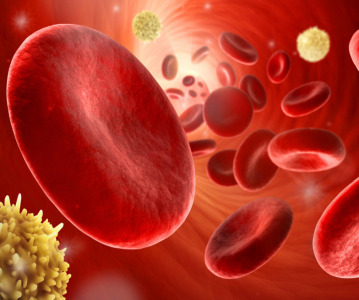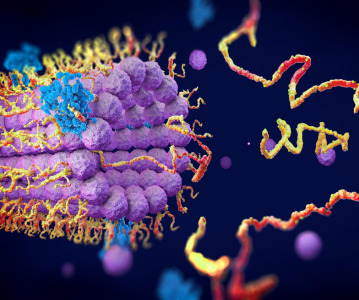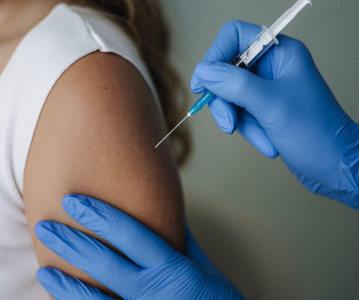Macrolide Pharmaceuticals Scientific Founder publishes new findings on groundbreaking technology for novel macrolide antibiotics

The paper describes a innovative synthetic chemistry platform that enables access to novel macrolide antibiotics.
Macrolide Pharmaceuticals has announced that a research team led by Macrolide’s scientific founder has published new findings in Nature describing a groundbreaking synthetic chemistry platform that enables access to novel macrolide antibiotics. The paper, entitled “A platform for the discovery of new macrolide antibiotics,” appeared in the May 19 edition of Nature based on research by Ian B. Seiple, PhD, Ziyang Zhang, and other members of Prof. Andrew Myers group at Harvard University.
The fully synthetic macrolide technology discovered by Prof. Myers and his team forms the basis of Macrolide Pharmaceuticals’ unique platform through a licensing agreement from Harvard University. Together with the Myers lab, Macrolide Pharmaceuticals has synthesized more than 600 novel macrolides, and is continuing to make macrolide derivatives that not only address drug-resistant Gram-negative pathogens, but also bacterial resistance mechanisms that limit the efficacy of commercial macrolides.
Notable scientists have reviewed the Nature paper and have applauded the impact of Myers’ technology platform. Ming Yan and Phil S. Baran, PhD, of The Scripps Research Institute comment in Nature: “[Myers and colleagues have developed] a highly modular and versatile chemical-synthesis approach that provides access to a rich array of antibiotics possessing different molecular topologies and functionalities.”
Current macrolide antibiotics, such as clarithromycin and azithromycin, are made by semi-synthesis, wherein the core structure is isolated by a fermentation process and then chemical modifications are made in the laboratory. But this approach has technical limitations.
A number of commentators have grasped the implications of the new approach to macrolide antibiotics, such as Derek Lowe, PhD, in his influential Science Translational Medicine blog, In the Pipeline (“Antibiotics from Scratch” on May 19, 2016, https://blogs.sciencemag.org/pipeline/): “There are more [compounds] to make – the same approach could produce thousands more compounds. It’s still a lot of work, but just getting into the “lot of work” category (and out of the “totally implausible” one) is a big accomplishment.”
“The team at Macrolide Pharmaceuticals has been making good progress, and has identified macrolide scaffolds that have significantly better activity against clinically relevant Gram-negative organisms than any macrolide molecules that have been published to date,” said Larry Miller, CEO of Macrolide Pharmaceuticals. “We are indeed fortunate to have gained an exclusive license to the technology developed by Andy Myers and colleagues, and our initial efforts show encouraging results. We’re confident that we can use this breakthrough to discover new antibiotics to treat the huge unmet clinical need of serious bacterial infections.”
Related News
-
News Experimental drug for managing aortic valve stenosis shows promise
The new small molecule drug ataciguat is garnering attention for its potential to manage aortic valve stenosis, which may prevent the need for surgery and significantly improve patient experience. -
News How GLP-1 agonists are reshaping drug delivery innovations
GLP-1 agonist drug products like Ozempic, Wegovy, and Mounjaro have taken the healthcare industry by storm in recent years. Originally conceived as treatment for Type 2 diabetes, the weight-loss effects of these products have taken on unprecedented int... -
News A Day in the Life of a Start-Up Founder and CEO
At CPHI we work to support Start-Up companies in the pharmaceutical industry and recognise the expertise and innovative angles they bring to the field. Through our Start-Up Programme we have gotten to know some of these leaders, and in this Day in the ... -
News Biopharmaceutical manufacturing boost part of new UK government budget
In their national budget announced by the UK Labour Party, biopharmaceutical production and manufacturing are set to receive a significant boost in capital grants through the Life Sciences Innovative Manufacturing Fund (LSIMF). -
News CPHI Podcast Series: The power of proteins in antibody drug development
In the latest episode of the CPHI Podcast Series, Lucy Chard is joined by Thomas Cornell from Abzena to discuss protein engineering for drug design and development. -
News Amgen sues Samsung biologics unit over biosimilar for bone disease
Samsung Bioepis, the biologics unit of Samsung, has been issued a lawsuit brought forth by Amgen over proposed biosimilars of Amgen’s bone drugs Prolia and Xgeva. -
News CPHI Podcast Series: Why we need to consider women in clinical trials
The latest episode of the CPHI Podcast Series with Lucy Chard covers women's health, specifically women's representation in clinical trials, the associated bias, and the impacts on health for this population. -
News US FDA does not approve MDMA therapy for PTSD, requests more data
The MDMA-based therapeutic developed by Lykos Therapeutics, a California-based Public Benefit Corporation (PBC), has been reviewed and unapproved by the US FDA. The regulator has requested additional phase III trial data for further safety and efficacy...
Recently Visited
Position your company at the heart of the global Pharma industry with a CPHI Online membership
-
Your products and solutions visible to thousands of visitors within the largest Pharma marketplace
-
Generate high-quality, engaged leads for your business, all year round
-
Promote your business as the industry’s thought-leader by hosting your reports, brochures and videos within your profile
-
Your company’s profile boosted at all participating CPHI events
-
An easy-to-use platform with a detailed dashboard showing your leads and performance





.png)

.png)